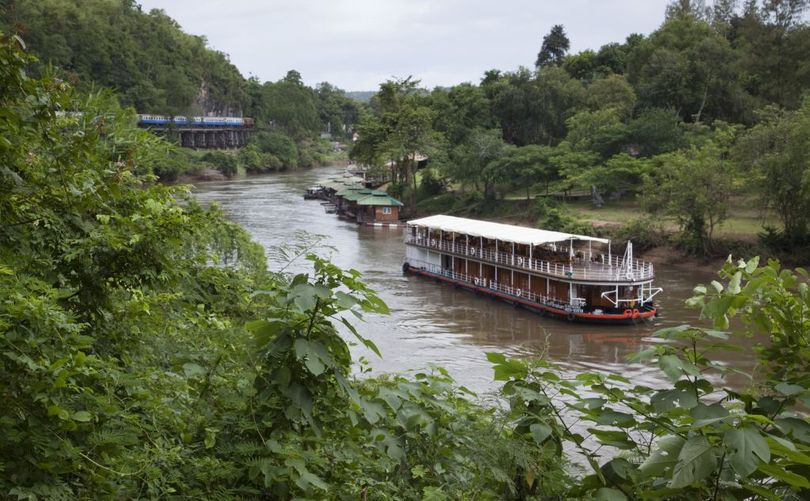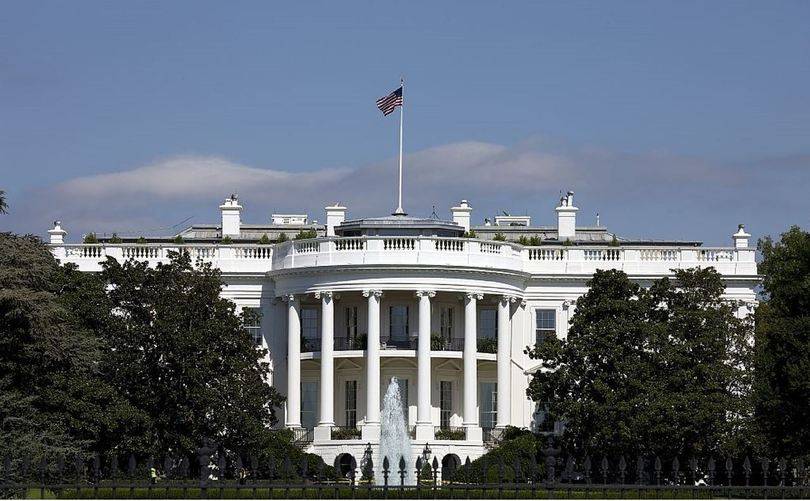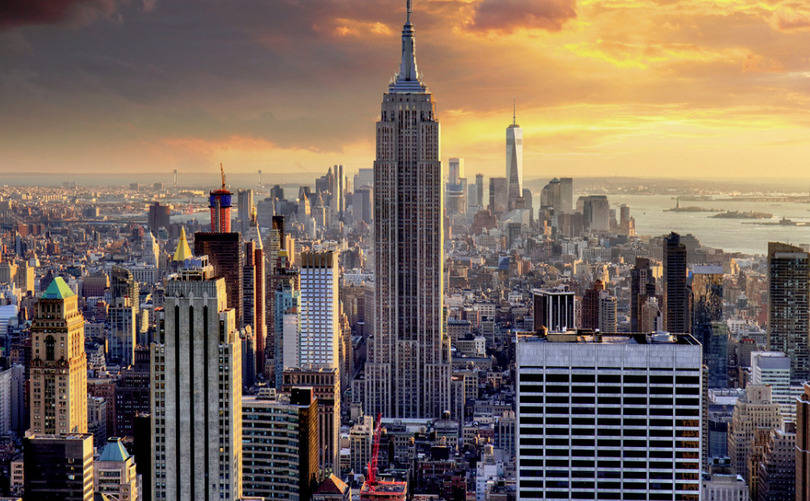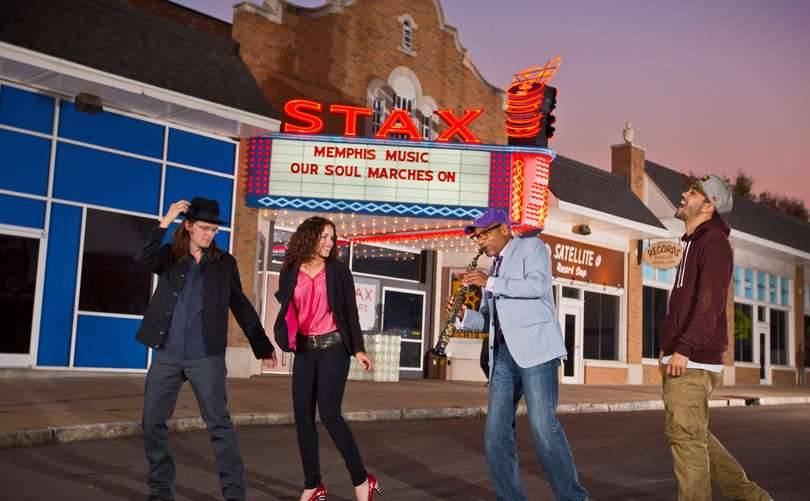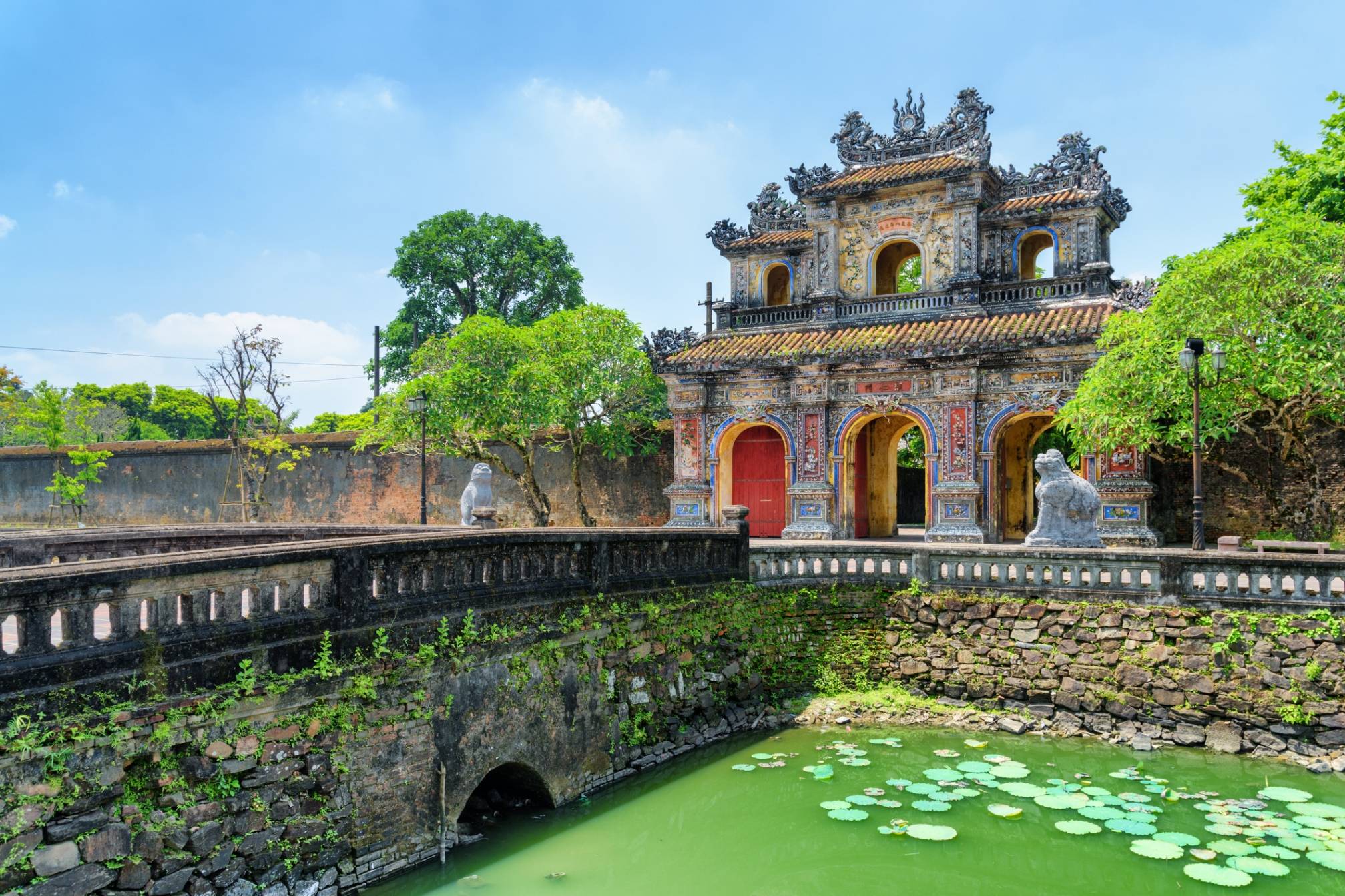
Ancient Central Vietnam (4 Days/3 Nights)
Hue
Experience Ancient Central Vietnam on this 4 Days/3 Nights Journey!
Highlights
- Hue - Visit the Imperial Citadel, palaces, ornate halls and witness a daily Buddhist prayer
- Da Nang - Mausoleum of Emperor Tu Doc, Lang Co Beach
- Hoi An - Famous lantern workshop, World Heritage Sites
- Day 1 - Hue Arrival
- Day 2 - Hue – Da Nang – Hoi An
- Day 3 - Hoi An – Sightseeing
- Day 4 - Da Nang – Departure
- Additional Information
The tour starts either from Phu Bai Airport or from your hotel in Hue. Visit the Imperial Citadel (which was built in accordance to the principles of geomancy) housing a series of palaces, ornate halls, libraries, residences and colleges. In the afternoon, witness a daily Buddhist prayer at the Thien Mu Pagoda before enjoying a cruise on the river back to town.
Overnight in Hue
EMM Hotel Hue
Hue Imperial Citadel
Famously being one of Vietnam’s seven UNESCO World Heritage Sites, the Imperial City of Hue has long been a must-see attraction for tourists visiting a hidden charm of Vietnam.
Famously being one of Vietnam’s seven UNESCO World Heritage Sites, the Imperial City of Hue has long been a must-see attraction for tourists visiting a hidden charm of Vietnam. The Imperial City of Hue was actually a walled fortress and palace belonged to the ancient city of Hue which was a capital city of the Nguyen Dynasty for 140 years date back from 1805 until 1945.
The grandeur architecture was planned to be built in 1803 by Gia Long – an emperor who founded the Nguyen Dynasty. During 27 years from 1805 to 1832, the Imperial City of Hue was finally completed under the reign of Minh Mang, making it the most massive structure being built in the history of modern Vietnam involving thousands of workers, millions cubic meters of rock and huge volume of burden workload. It locates on the northern bank of Huong River, turning South with total land area of 520 ha. The place was made UNESCO Site in 1993 with the remained buildings being actively restored and preserved after the destruction from the Vietnam War.
The Imperial City of Hue has a circumference of 10 kilometers with the height of 6.6 meters and 21 meters thick with forts being meanderingly arranged, accompanied by cannons, artilleries and ammunitions. Initially the fortress was built solely by soil, only to be replaced by bricks afterward. Surrounding the city is the complicated canal system served not only as a protection but also as a waterway with nearly seven kilometers.
There are total of ten main majestic gates leading to the Imperial City of Hue, which can be divided into two main parts excluding houses and mansions: The Citadel and The Forbidden City. The former served to protect the important palaces inside while the latter was where the emperor and the royal family stayed as well as the court’s workplace. All the typically traditional Eastern architectures including majestic palaces, tombs and museums stand accordantly together to make an utmost amusing attraction right in the heart of Vietnam.
There is no difficulty getting to the Imperial City. From Phu Bai International Airport, head straight to 1A Highway and you’ll be standing right next to a massive gate leading its way inside; just prepare 50.000 VND for the ticket and all there’s left for you to do is sightseeing the magnificence of the Imperial City of Hue.
Thien Mu pagoda
If Hanoi has One-pillar pagoda, Hue is renowned for its Thien Mu pagoda. The architecture, location and history makes Thien Mu pagoda among the top attractions to see in Hue.
Visit the mausoleum of Emperor Tu Duc before driving to Da Nang via Lang Co Beach and Hai Van Pass. Stop at the Cham Museum for a visit. Arrive in Hoi An. The rest of the day is free.
Overnight in Hoi An [Breakfast]
EMM Hotel Hoi An
Tu Duc Tomb
A glance at the tomb can create the illusion of a park, packed with frangipani trees and grove of pines.
Pay a visit to one of Hoi An’s famous lantern workshops and learn how to make one yourself before setting out on a walking tour to explore this World Heritage Site. Highlights include an ancient merchant house, the Phuc Kien Assembly Hall, the 400-year-old Japanese Covered Bridge and the vibrant riverside market. Take a peaceful boat trip on the Thu Bon River and afterwards enjoy free time to further explore the old town.
Overnight in Hoi An [Breakfast]
EMM Hotel Hoi An
HOI AN RIVERSIDE
From the 16th to the 18th centuries, Hoi An attracted international traders because of its location on the banks of Thu Bon River, conveniently flowing into the East China Sea. The merchants chose to stop here to wait for the right wind directions for their next destinations. Among them were traders from China, Japan, the Netherlands, France, Portugal and India.
Of all the streets in the Old Town, the one that runs east-west to the river’s edge is the liveliest. The traditional buildings and shops have welcomed foreign merchants since the days when the town was known as Hai Pho (Seaside Town). Nowadays it no longer greets foreign traders but tourists and travelers.
However, the seemingly untouched architecture in Hoi An’s Riverside and Old Town was built only about 200 years ago and is made up of a mix of Vietnamese, Chinese, Japanese and colonial styles. Those who wish to see older buildings will have to go further inland where they can find, for example, a 15th century pagoda.
FUJIAN ASSEMBLY HALL IN HOI AN
The photogenic Fujian (Phuc Kien) assembly hall was created as a place in which residents from Fujian in China could meet up and socialise whilst living or visiting Hoi An. Built around 1690 with the main gate added much later, the assembly hall is also a World Cultural Heritage site and is much visited today by those seeking a glimpse of this superb piece of architecture.
The inside of the assembly hall contains the Jinshang Golden Mountain temple dedicated to Thien Hau, the goddess of the sea and caretaker of sailors, featuring altars adorned with delicately carved dragons. There is also a fertility shrine to help answer the prayers of childless couples who visit.
JAPANESE COVERED BRIDGE IN HOI AN
One of Vietnam's most iconic attractions, Hoi An's Japanese covered bridge dates back to the 18th century and is a beautiful historical piece of Japanese architecture. It is claimed that it was created by the Japanese then living in Hoi An as a way to reach the Chinese quarter across the water.
The bridge was opened by Nguyen Phuc Chu Lord in 1719 who carved three Chinese symbols above the door in commemoration. The bridge also features the sculptures of two dogs and two monkeys representing the Chinese years in which many Japanese Emperors were born along with the fact that the building of the bridge began in the year of the dog and was completed in the year of the monkey.
The Japanese Covered Bridge underwent renovation work in 1986 which saw the restoration of the arch that was once flattened to make way for cars. Today, the bridge stands as a symbol of Hoi An and remains as aesthetically pleasing as it was when it first opened.
Free until transfer to the airport for departure.
[Breakfast]
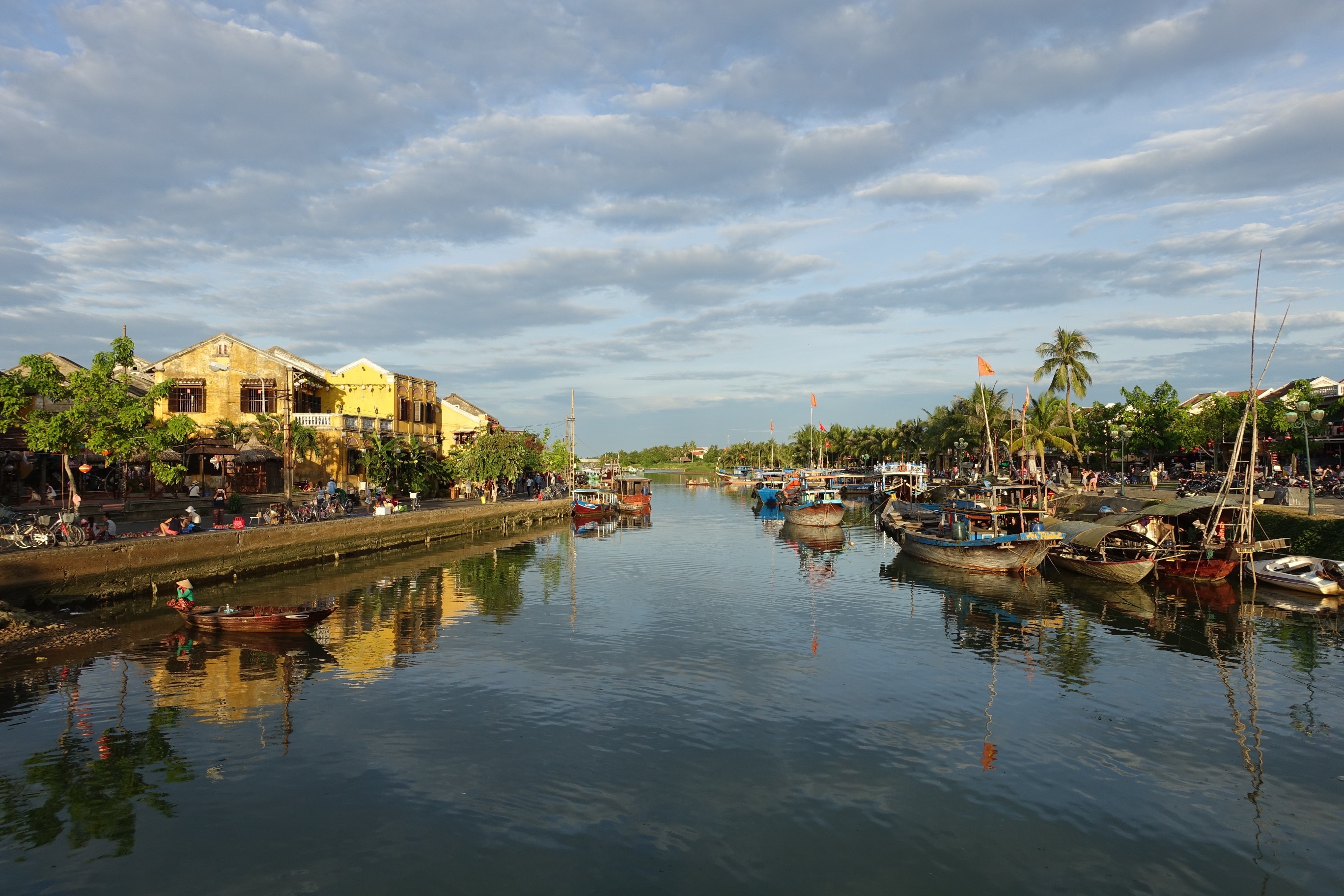
INCLUDED IN THE TOUR PRICES ARE:
- Vietnam visa approval number processing fee
- Accommodation & daily breakfast
- Transportation on tour in air-conditioned vehicles
- Local English speaking guides
- Entrance fees for all sight-seeing tours as specified in the itinerary
- Meals as specified in the itinerary
- Bottled water for sightseeing tours
- International air ticket reconfirmation
NOT INCLUDED IN THE TOUR PRICES ARE:
- Vietnam visa stamping fee
- International airfares
- Beverages during included meals
- All personal expenses
- Personal insurance
- Gratuities for guide, driver, waiter/waitress, bell boy, boat crew etc.
- All other services not mentioned in the itinerary
Deluxe, Deluxe Plus and First Class hotel option is available. Please call for a quote.







